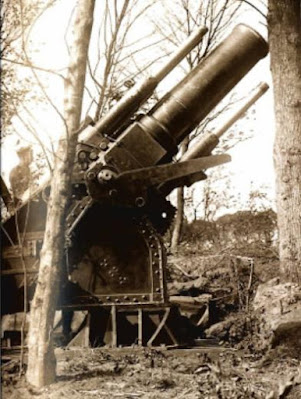The Battle of the Somme was the second major battle of WW1. It was fought between the British Expeditionary Forces and the German 2nd Army from July 1 to November 18, 1916, on the Somme River and its neighboring area, in northern France. During the Somme Offensive, the Allied (Entente's) forces suffered the loss of 700,000 soldiers, who were killed in action as they tried to take the enemy trenches, with very little territorial gains. Hence, we can say that it was a gory Pyrrhic victory for the British, and, at the end, the military situation on the Western Front returned to the stalemate of trench warfare.
Below, British troops advancing across No Man's Land towards the German trenches on the morning of July 1, 1916.
Summary
On February 21, 1916, the Imperial German Army had launched a massive offensive against Verdun, France's strongest defensive system, which consisted of a series of forts. This vicious battle lured many French Army's divisions to that site of the front line to stop the German offensive. In order to relieve the French, the British High Command launched a powerful offensive against the German positions on the Somme. This Allied attack was carried out by the BEF's 4th Army, led by Henry Rawlinson, while the German 2nd Army, under Max von Gallwitz, had been deployed along the Somme as their divisions bore the brunt of the British assault, which was reinforced with some French units. To beef up their front line on the Somme, the Germans transferred many artillery units from Verdun over to that sector being attacked by the Allies.
The British Somme Offensive proved to be futile, for the territory taken from the Germans was only a few kilometers deep as some of the positions captured would be recovered again by German counterattacks. The BEF and French Army had established a series of objectives to reach and capture along the Somme. These objectives were named after the towns or ridges, which were being defended by the Germans, such as Bazentin Ridge, Fromelles, Pozieres, Ginchy, Flers-Courcelette, Thiepval, Guillemont, and so forth. Thus, between July and November, these Allied military goals gave way to secondary military engagements that took place during the Somme Offensive.



0 $type={blogger}:
Post a Comment